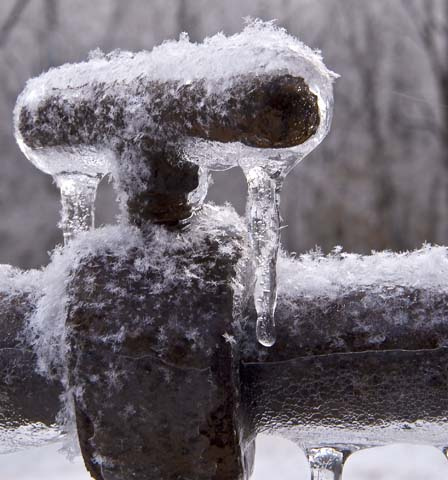Important Tips for Preventing Frozen Plumbing in Cold Weather Seasons
Important Tips for Preventing Frozen Plumbing in Cold Weather Seasons
Blog Article
The writer is making a number of good annotation regarding How to prepare your home plumbing for winter weather as a whole in this content down the page.

Winter can wreak havoc on your plumbing, especially by freezing pipelines. Below's just how to prevent it from happening and what to do if it does.
Intro
As temperatures drop, the threat of icy pipes boosts, possibly leading to expensive fixings and water damage. Comprehending just how to stop frozen pipes is vital for homeowners in cold climates.
Avoidance Tips
Shielding at risk pipelines
Wrap pipes in insulation sleeves or use heat tape to safeguard them from freezing temperatures. Focus on pipes in unheated or outside locations of the home.
Home heating strategies
Maintain interior areas properly heated up, especially locations with plumbing. Open cabinet doors to permit warm air to flow around pipes under sinks.
Just how to identify frozen pipelines
Seek lowered water circulation from faucets, unusual odors or sounds from pipelines, and visible frost on subjected pipelines.
Long-Term Solutions
Architectural adjustments
Think about rerouting pipes far from outside wall surfaces or unheated locations. Include added insulation to attic rooms, cellars, and crawl spaces.
Updating insulation
Buy top quality insulation for pipes, attics, and walls. Proper insulation helps keep regular temperature levels and minimizes the danger of frozen pipes.
Protecting Exterior Pipes
Yard hoses and outdoor taps
Separate and drain pipes yard hoses before wintertime. Mount frost-proof spigots or cover outdoor faucets with shielded caps.
Comprehending Frozen Pipes
What creates pipes to ice up?
Pipes ice up when subjected to temperatures listed below 32 ° F (0 ° C) for extended durations. As water inside the pipelines freezes, it increases, putting pressure on the pipe wall surfaces and potentially causing them to burst.
Threats and problems
Icy pipes can bring about water interruptions, home damage, and costly repairs. Burst pipes can flood homes and cause considerable architectural damage.
Indicators of Frozen Pipes
Identifying icy pipes early can stop them from rupturing.
What to Do If Your Pipelines Freeze
Immediate activities to take
If you presume frozen pipelines, keep taps open to soothe pressure as the ice thaws. Use a hairdryer or towels taken in hot water to thaw pipes gradually.
Conclusion
Protecting against frozen pipelines calls for proactive procedures and fast reactions. By comprehending the reasons, signs, and preventive measures, house owners can shield their plumbing during cold weather.
5 Ways to Prevent Frozen Pipes
Drain Outdoor Faucets and Disconnect Hoses
First, close the shut-off valve that controls the flow of water in the pipe to your outdoor faucet. Then, head outside to disconnect and drain your hose and open the outdoor faucet to allow the water to completely drain out of the line. Turn off the faucet when done. Finally, head back to the shut-off valve and drain the remaining water inside the pipe into a bucket or container. Additionally, if you have a home irrigation system, you should consider hiring an expert to clear the system of water each year.
Insulate Pipes
One of the best and most cost-effective methods for preventing frozen water pipes is to wrap your pipes with insulation. This is especially important for areas in your home that aren’t exposed to heat, such as an attic. We suggest using foam sleeves, which can typically be found at your local hardware store.
Keep Heat Running at 65
Your pipes are located inside your walls, and the temperature there is much colder than the rest of the house. To prevent your pipes from freezing, The Insurance Information Institute suggests that you keep your home heated to at least 65 degrees, even when traveling. You may want to invest in smart devices that can keep an eye on the temperature in your home while you’re away.
Leave Water Dripping
Moving water — even a small trickle — can prevent ice from forming inside your pipes. When freezing temps are imminent, start a drip of water from all faucets that serve exposed pipes. Leaving a few faucets running will also help relieve pressure inside the pipes and help prevent a rupture if the water inside freezes.
Open Cupboard Doors
Warm your kitchen and bathroom pipes by opening cupboards and vanities. You should also leave your interior doors ajar to help warm air circulate evenly throughout your home.

We hope you liked our topic about Preventing and dealing with frozen pipes. Thanks a lot for spending some time to read our content. Appreciated our blog? Please share it. Help someone else find it. Thanks a lot for taking the time to read it.
Schedule Appointment Report this page